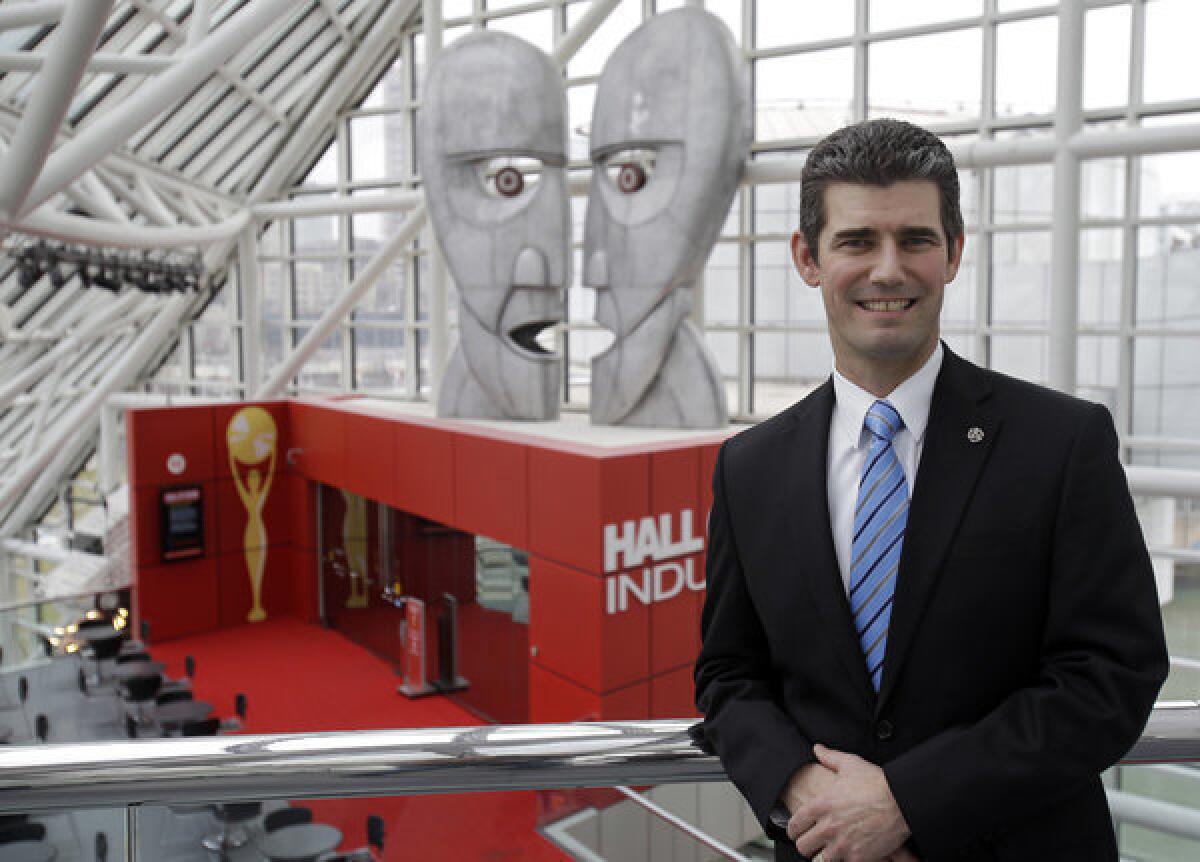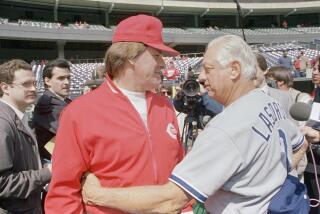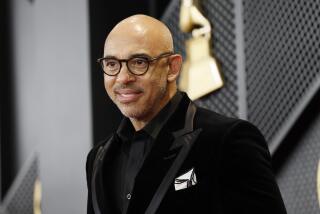First thoughts from new Rock Hall chief Greg Harris

Among the first orders of business for Greg Harris on Monday on the announcement of his new post as president and chief executive at the Rock and Roll Hall of Fame and Museum was to throw on a few of his favorite records during breakfast at home.
âI was digging into some stuff I hadnât heard in a while,â Harris, 47, said from the museumâs headquarters in Cleveland. âThe first thing I wanted to hear was something off Bruce Springsteenâs âGreetings From Asbury Park, N.J.,â so I put on âGrowinâ Up.â Then we went to some Bob Dylan, some Otis Redding, and then the Clash. So there was a little bit of a progression going on.â
Progression is whatâs happening at the museum with Harrisâ appointment to succeed Terry Stewart, the institutionâs president and CEO since 1999. In May, Stewart announced that he would retire from that post at the end of this year.
Continued progress is what Harris is looking forward to when he officially takes the reins at the Rock Hall on Jan. 1. âThis isnât a turnaround project,â he said. âThe museumâs on solid ground. We have a firm base on which to build and advance it. We want to look at how can we take what we have, engage more people, deliver programming and content to those outside of our walls, how to continue building our wonderful museum collections and library collections and how to expand the reach of our educational programs.
âOverall, we want to take whatâs a wonderful regional treasure and make it a little more national without giving up the great regional base,â he said. One goal will be boosting attendance at the Cleveland facility itself, which sees about half a million visitors annually.
Among the innovations from the past year that Harris expects to continue building is the increasing role the public has in the often-controversial Hall of Fame inductions.
Earlier this year, a significant number of fans were admitted into the annual Hall of Fame induction ceremony at the 7,400-capacity Cleveland Public Auditorium. With the unveiling in October of the final nominees for induction in 2013, the organization also for the first time made provisions to incorporate fan voting into the process.
âItâs pretty exciting to have the fans be able to attend, like we did in Cleveland,â Harris said. âThat adds a whole different dimension. Not that the induction ceremony wasnât great before, but to have the really passionate music fans, the people who listen to the music and it means so much to them -- to be able to have them celebrate with the bands they love is incredible.â
Thatâs the plan again for the 2013 ceremony, which will take place in Los Angeles for the first time, at the 7,100-capacity Nokia Theatre.
âWeâve been building this great base and want to make it better,â Harris said. âWe want to expose more people to it, and weâre working to find ways to be relevant and to stay relevant to younger audiences. By definition, this museum focuses on older acts, in that to be inducted you have to have made a record 25 years ago. So thatâs part of what weâre looking at.â
Harris recognizes that the Hall of Fame will always face the issue of explaining why certain musicians have never been admitted, whether itâs progressive rock acts such as Rush (the top vote-getter during the just-concluded fan vote part of the process), the Monkees or Gram Parsons.
âThe answer is that everybody has certain artists in music that mean a lot to them at a certain time in their life,â he said. âFor the Rock and Roll Hall of Fame, by its definition, it should be reserved for less than 1% of those that ever recorded, and when you do that, some are going to be excluded; some are not going to make the list. I have my favorites that are not inducted, and some day I hope they are.
âSome artists have sold a lot of records, but they havenât necessarily been impactful or influential; they havenât been the pioneers. And to be in the Rock and Roll Hall of Fame, you have to be influential and impactful on the art form.â
And thatâs one big distinction between the Rock Hall and his former employer, the Baseball Hall of Fame in Cooperstown, N.Y., where he worked his way up to vice president of development. He held the same position at the Rock Hall, which he joined in 2008, before being named to the Rock Hallâs top executive spot this week.
âIt doesnât matter how you won 300 games -- if you win 300 games, youâre inâ the Baseball Hall of Fame, he said. âWhen youâre into the world of art and aesthetics, peopleâs sense of that changes. Youâre dealing with subjective decisions and subjective criteria. The exciting thing is that people talk about it and they care about it.
âWhen the results come in . . . whatever way it goes, thereâs going to be a lot of passion,â he said. âThatâs fun, and thatâs one of the great things about it.â
ALSO:
Led Zeppelin receives Kennedy Center honors
Rock Hall of Fame names new president and CEO
Rush leads fan voting for 2013 Rock Hall of Fame
Follow Randy Lewis on Twitter: @RandyLewis2
PHOTOS AND MORE
PHOTOS: Iconic rock guitars and their owners
The Envelope: Awards Insider
PHOTOS: Unfortunately timed pop meltdowns
More to Read
The biggest entertainment stories
Get our big stories about Hollywood, film, television, music, arts, culture and more right in your inbox as soon as they publish.
You may occasionally receive promotional content from the Los Angeles Times.










